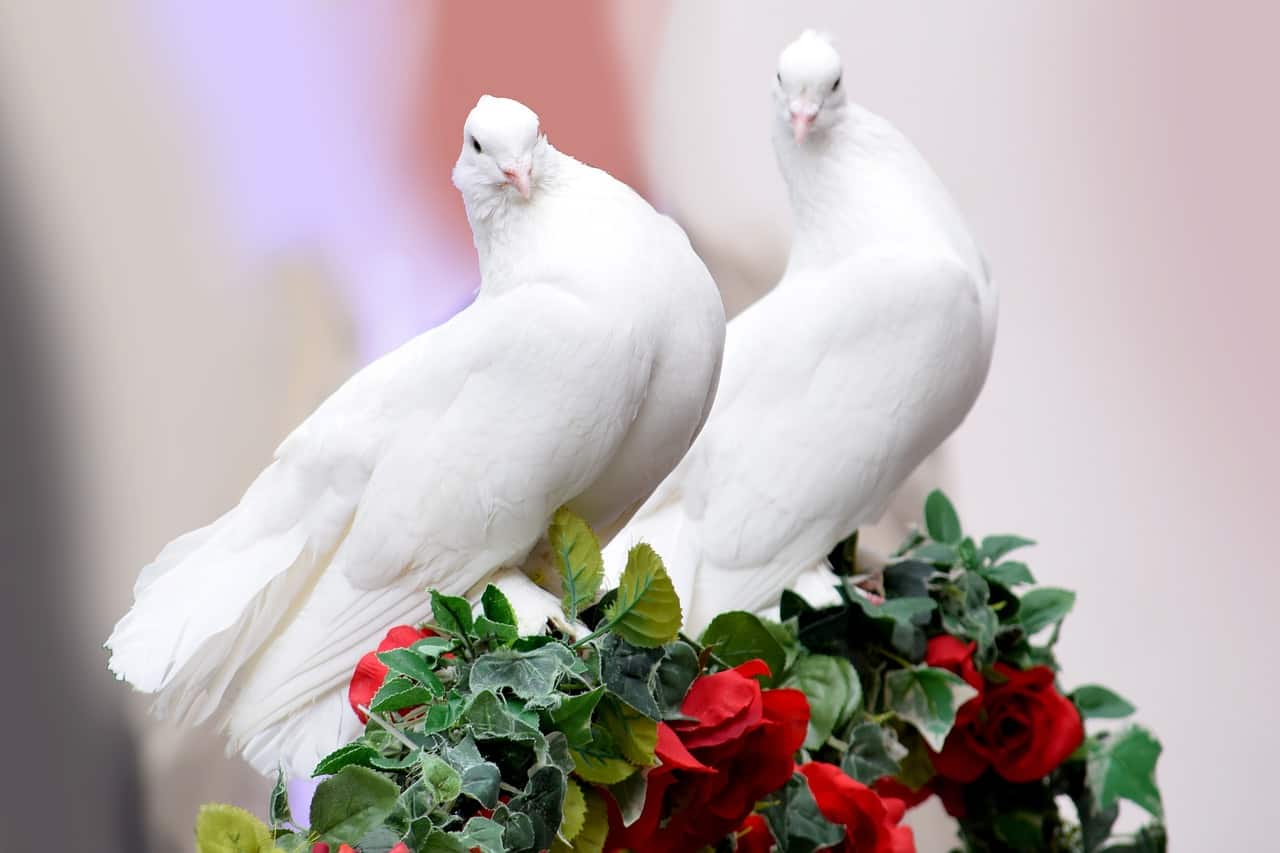
For this year’s love month, celebrate the holiday by going in-depth into the real Valentine’s Day meaning. Maybe you could get more ideas by learning where Valentine’s Day came from or knowing the history behind favorite Valentine’s symbols and traditions. Here are Valentine’s Day facts to spark your holiday with more love and meaning than before!
- Valentine’s Day used to be called ‘San Valentin Day’ or ‘St. Valentine’s Day.’
- Celebrated every February 14, it is a day for lovers to express affection using gifts and greetings.
- For Indian and Pakistani religious activists, Valentine’s Day is a day of lust and shame.
- Americans spend on Valentine cards second to how much they do on Christmas cards.
- In the U.S., Valentine’s Day industry is at $14.7 billion.
- In Welsh tradition, being born on Valentine’s Day would grant a child many lovers.
- Welsh beliefs say that Valentine’s Day-born calves have no use for breeding.
- Hens hatching on Valentine’s Day would have rotten eggs, as Welsh tradition dictates.
- The receiver of most Valentine’s cards are teachers, followed by mothers and wives.
- In the late 1800s, Richard Cadbury launched the first Valentine’s Day chocolate box.
- Hallmark Cards released its first Valentine’s card in 1913.
- Valentine’s Day celebrants make up around 55% of Americans.
- Jewelry tops the bestseller list for V-day, as per the National Retail Federation.
- Each year, ‘conversation heart’ candies release around ten new sayings.
- Engraver Robert Elton produced the first American Valentine in 1834.
- Alexander Graham Bell applied for a patent for his telephone invention on V-day in 1876.
- February 14, 1929, was the birth of Penicillin.
- Voyager I’s solar system photo was taken on Valentine’s Day of 1990.
- On the 2010 V-day, Mexico City made the record for the largest group kiss with 39,897 people.
- The infamous Conversation Hearts Valentine candy could last up to 5 years.
The history of Valentine's Day involves the Lupercalia.
This Roman festival occurs every mid-February of the year. Celebrations include recognition of the spring season and fertility rites. Moreover, a lottery pairs women off with men.
Valentine's Day was originally a liturgical feast for the death of 2-3 Christian martyrs.
Ancient sources point out to more than one St. Valentine whose deaths occurred on the 14th of February. Roman Emperor Claudius Gothicus of 269-270 AD was believed to execute two of them.

Valentine's Day started when Pope Gelasius I assigned it in place of Lupercalia.
St. Valentine’s Day came to recognition at the end of the 5th century. By the 14th century, celebrations evolved to Valentine’s Day as a day of romance.
One of the suspected Valentine's Day patrons is Saint Valentine of Terni.
He was a bishop during his time when Claudius beheaded him outside Rome.
Bishop Valentine defied Emperor Claudius in the name of love.
Claudius II forbade young men from marrying in the belief that single men made better soldiers. Disagreeing on one side, Valentine secretly married young lovers. Hence, the beheading.
Another legend tells of an imprisoned Valentine who fell in love.
The young girl, believed to be the daughter of his jailor, would visit him during his confinement. Before his execution, he allegedly signed ‘From your Valentine’ on a letter he sent to her. This expression remains useful today.

St. Valentine served as the patron saint for lovers, especially engaged couples.
He was believed to have suffered from epilepsy, making him the patron saint for the condition as well. Moreover, St. Valentine was also on the pedestal for beekeepers, greetings, travelers, young people, and the plague.
Chaucer recorded the first association of romantic love with Valentine's Day.
In his ‘Parlement of Foules,’ he wrote: ‘For this was on Saint Valentine’s day / When every bird comes there to choose his mate.’
The first known official celebration of St. Valentine's Day is The High Court of Love.
It was founded in Paris, France back in 1400. Thirty women participated in dealing with love contracts, betrayals, and violence against women.
Pope Paul VI removed St. Valentine's Day from the Roman Calendar of Saints.
Since there was no clear account on the said saint, they pushed for the removal in 1969. The organization still allowed religious observances after that.
Thousands of letters fly to Verona Italy on Valentine's Day each year.
All of them are addressed to Juliet from Shakespeare’s Romeo and Juliet. Juliet club volunteers receive and respond to each one. Moreover, they award the ‘Dear Juliet’ or ‘Cara Giulietta’ prize to the writer of the year’s most romantic letter.
Cupid, a well-known Valentine's symbol, is the Roman god of love.

His name translates to ‘desire.’ Cupid is son to Venus and Mars and has the image of a young man sharpening his arrows on an infant-blooded grindstone. However, business owners of the Victorian era birthed the god’s modern-day pudgy baby appearance in an attempt to adjust the holiday for children and women.
Red hearts are the most prevalent Valentine symbol.
People once thought that the heart was the body part responsible for feeling love. With its role in pumping blood, it dragged along the association of the red color with blood.
The red heart symbolization might also be from the resemblance of the plant silphium.
Silphium became useful in formulating cough syrup, contraceptives, and food coloring. Due to the plant’s shape, it gained associations with sex, which eventually altered to love. The silphium plant thrived in Cyrene in Africa before it became extinct.
Another famous Valentine symbol, the dove is revered to Venus.
People from medieval times believed that the doves choose their lifelong mates on the 14th of February. It might as well be the reason why they became associated with the love deities. Also, it made the lovely birds a favorite Valentine’s card symbol.

The phrase 'wearing your heart on your sleeve' is as old as the Middle Ages.
Back then, boys would draw girls’ names from a ballot in picking their ‘Valentine.’ They would then pin the selected name on their sleeve for one week.
The tradition of Valentine's cards dramatically changed in Paris late in the 18th century.
It was the time of the appearance of the first European post-boxes, which sparked the revolution for the production and delivery of Valentine’s cards as well.
The most popular Valentine's Day flower is a single red rose enveloped by baby's breaths.
Like the dove bird, the red rose also has love links with the Roman goddess of love, Venus.

The etymology of garters and gloves made them traditional Valentine tokens.
‘Garter’ originated from the Old French term garet, which means ‘bend in the knee.’ On the other hand, ‘glove’ came from the Old English term glof, which means ‘palm of the hand.’
Some people from the Victorian Era celebrate the holiday by sending 'vinegar valentines.'
The main difference is that unwanted suitors stand at the receiving end of these keepsakes. Also known as ‘penny dreadfuls,’ they contradict the usual valentines as they insult and reject undesired admirers.
The mass production of Valentine's Day cards in the U.S. began in the 1840s.
Esther A. Howland, branded as the ‘Mother of American Valentine,’ takes the credit for the commercialization of the love cards in the country. Her trademark is the elaborately crafty cards adorned with lace and ribbons.
Lace as Valentine symbol has a deeper meaning than its fancy appearance.

The term itself came from the Latin word lacques, which means ‘to snare or net.’ In other words, it also implies catching a person’s heart.
Flowers given and received on Valentine's Day vary in meaning based on the colors.
Red roses signify love, yellow for friendship, and pink means sweetheart. White carnations symbolize pure love, while red ones imply admiration. Further, red chrysanthemums stand for love; primroses are for young love, forget-me-nots signify true love, while larkspur represents an open heart.
In 1415, the English Duke of Orleans sent the first-ever documented Valentine.
From his captivity at the Batte of Agincourt, he was serving his 20-year sentence when he sent his Valentine to his wife. The Duke was not able to witness his beloved’s reaction, but his letter remained on display in the British Museum to date.
Texas has a town named Valentine.
However, there is no romantic reason behind it at all. It just so happened that the first train to ever arrive in the town landed on February 14.
It is a tradition for Japanese women to be the ones to send confections to the men on Valentine's Day.
The quality of the chocolate they chose to give is the main indication of their true feelings. Whereas a month later, the men then have the opportunity to return the favor. This day on the 14th of March also goes by the name ‘White Day.’
In Thailand, the Bangrak district in Bangkok is also known as the 'Village of Love.'
Couples look forward to getting married in the location on Valentine’s Day each year. Due to the name of the village, they believed that holding their wedding there would guarantee long-lasting marriage. Hence, hopeful couples would line up outside the district office starting in the wee hours of the morning.

American soprano Renée Fleming was born on Valentine's Day.
Other famous people who have February 14 as their birthday are English actor Freddie Highmore, Zimbabwean-American actress Danai Gurira, Canadian actor Brett Dier, South Korean actor Sung Hoon, Dutch politician Mark Rutte, and Danish athlete Christian Eriksen.
An association of feminists celebrates 'Quirkyalone Day' on February 14.
The organization of this Valentine’s Day alternative is for the people who ‘resist the tyranny of coupledom.’
Another Valentine's Day alternative is the SAD or Single Awareness Day.
This option serves as a reminder that being in a relationship is not a pre-requisite for people to celebrate life.
Was this page helpful?
Our commitment to delivering trustworthy and engaging content is at the heart of what we do. Each fact on our site is contributed by real users like you, bringing a wealth of diverse insights and information. To ensure the highest standards of accuracy and reliability, our dedicated editors meticulously review each submission. This process guarantees that the facts we share are not only fascinating but also credible. Trust in our commitment to quality and authenticity as you explore and learn with us.


